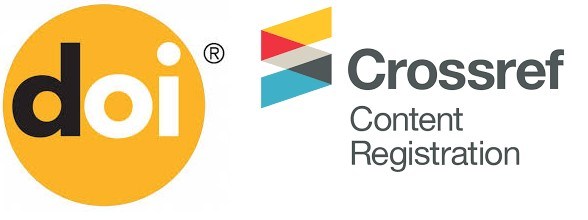Evidencias de conocimiento entre Matemáticas y Física sobre velocidad media
DOI:
https://doi.org/10.46219/rechiem.v13i1.36Palabras clave:
Transferencia de conocimiento, Matemáticas, Física, velocidad media, BachilleratoResumen
Resultados de investigaciones previas han puesto de manifiesto la complejidad de la transferencia de conocimiento entre Matemáticas y Física. El objetivo de este artículo es caracterizar las manifestaciones de transferencia o evidencia de conocimiento entre ambas áreas en estudiantes de Bachillerato (16-18 años) cuando resuelven problemas sobre la velocidad media. El enfoque metodológico es cualitativo. Nuestro instrumento de recogida de datos es dos tareas sobre velocidad media en distintos registros de representación, que realizaron un total de 119 estudiantes españoles. Los resultados han permitido identificar cuatro grupos de estudiantes en relación con la evidencia de conocimiento de la tasa de variación media y la velocidad media, puesta de manifiesto en la resolución de las tareas. Un primer grupo de estudiantes que no usa la velocidad media ni la tasa de variación media, un segundo grupo que usa la tasa de variación media, un tercer grupo que evidencia conocimiento de ambas áreas a partir de determinados datos y un cuarto grupo que manifiesta la transferencia de conocimiento entre ambas áreas a partir de cualquier tipo de datos. Estos resultados nos han permitido caracterizar una posible progresión en la transferencia de conocimiento entre ambas áreas en resolución de tareas sobre velocidad media.
Descargas
Citas
Azcárate, C. (1984). La nueva ciencia del movimiento de Galileo: una génesis difícil. Enseñanza de las Ciencias, 2(3), 203-208.
Azcárate, C. (1990). La velocidad: introducción al concepto de derivada. Universitat Autònoma de Barcelona.
Bassok, M. (1990). Transfer of domain-specific problem-solving procedures. Journal of Experimental Psychology: Learning, 16(3), 522-533. https://doi.org/10.1037/0278-7393.16.3.522
Beichner, R. J. (1994). Testing student interpretation of kinematics graphs. American Journal of Physics, 62(8), 750-762. https://doi.org/10.1119/1.17449
Bransford, J. D., y Schwartz, D. (1999). Rethinking transfer: A simple proposal with multiple implications. Review of Research in Education, 24, 61-100. https://doi.org/10.3102/0091732X024001061
Brown, A. L., y Kane, M. J. (1988). Preschool children can learn to transfer: Learning to learn and learning from example. Cognitive Psychology, 20(4), 493-523. https://doi.org/10.1016/0010-0285(88)90014-X
Christensen, W. M., y Thompson, J. R. (2012). Investigating graphical representations of slope and derivative without a physics context. Physical Review Special Topics - Physics Education Research, 8(2), 1-5. https://doi.org/10.1103/PhysRevSTPER.8.023101
DiSessa, A. (1993). Towards an epistemology of physics. Cognition and Instruction, 10(2-3), 105-225. https://doi.org/10.1080/07370008.1985.9649008
Evans, J. (1999). Building Bridges: Reflections on the Problem of. Educational Studies in Mathematics, 39, 23-44. https://doi.org/10.1023/A:1003755611058
Greeno, J. G., Moore, J. L., y Smith, D. R. (1993). Transfer of situated learning. En D. K. Detterman, y R. J. Sternberg (Eds.), Transfer on trial: Intelligence, cognition and instruction (pp. 99-167). Ablex.
Hammer, D. (2000). Student Resources for Learning Introductory Physics. American Journal of Physics - Physics Education Research Supplement, 68(7), S52-S59. https://doi.org/10.1119/1.19520
Hernández Sampieri, R., Fernández Collado, C., y Baptista Lucio, P. (2006). Metodología de la investigación (4.a ed.). McGraw-Hill Interamericana.
Lobato, J. (1996). Transfer reconceived: How “sameness” is produced inmathematical activity. (Tesis doctoral, University of California). Dissertation Abstracts International, AAT 9723086.
Lobato, J. (2003). How Design Experiments Can Inform a Rethinking of Transfer and Vice Versa. Educational Researcher, 32(1), 17-20. http://www.jstor.org/stable/3699930
Marrongelle, K. A. (2001). Physics experiences and calculus: How students use physics to construct meaningful conceptualizations of calculus concepts in an interdisciplinary calculus / physics course. University of New Hampshire.
Marrongelle, K. A. (2004). How Students Use Physics to Reason About Calculus Tasks. School Science and Mathematics, 104(6), 258-272. https://doi.org/10.1111/j.1949-8594.2004.tb17997.x
McDermott, L. C., Rosenquist, M. L., y Van Zee, E. H. (1987). Student difficulties in connecting graphs and physics: Examples from kinematics. American Journal of Physics, 55(6), 503-513. https://doi.org/10.1119/1.15104
Ministerio de Educación, Ciencia y Deporte [MECD] (2015). Real Decreto 1105/2014. Boletín Oficial del Estado, Sec. I (Num. 3), 169-546.
Planinic, M., Milin-Sipus, Z., Katic, H., Susac, A., e Ivanjek, L. (2012). Comparison of student understanding of line graph slope in physics and mathematics. International Journal of Science and Mathematics Education, 10(6), 1393-1414. https://doi.org/10.1007/s10763-012-9344-1
Quinn, R. (2013). Students’ Confidence in the Ability to Transfer Basic Math Skills in Introductory Physics & Chemistry Courses at a Community College. Dissertations, 438. https://aquila.usm.edu/dissertations/438
Rebello, N. S., Cui, L., Bennett, A. G., Zollman, D. A., y Ozimek, D. J. (2017). Transfer of Learning in Problem Solving in the Context of Mathematics and Physics. En D. H. Jonassen (Ed.), Learning to Solve Complex Scientific Problems (pp. 223-246). Routledge. https://doi.org/10.4324/9781315091938-10
Rebello, N. S., Zollman, D. A., Allbaugh, A. R., Engelhardt, P. V., Gray, K. E., Hrepic, Z., Itza-Ortiz, S. F. (2005). Dynamic Transfer: A Perspective from Physics Education Research. En J. P. Mestre (Ed.), Transfer of Learning from a Modern Multidisciplinary Perspective (pp. 217-250). Information Age Publishing Inc.
Redish, E. F., y Kuo, E. (2015). Language of Physics, Language of Math: Disciplinary Culture and Dynamic Epistemology. Science and Education, 24(5-6), 561-590. https://doi.org/10.1007/s11191-015-9749-7
Reed, S. K. (1993). A schema-based theory of transfer. En D. K. Detterman, y R. J. Sternberg (Eds.), Transfer on trial: Intelligence, Cognition and Instruction (pp. 39-67). Ablex.
Sánchez-Matamoros, G. (2004). Análisis de la comprensión en los alumnos de bachillerato y primer año de universidad sobre la noción matemática de derivada (Desarrollo del concepto). (Tesis doctoral, Universidad de Sevilla). Depósito de investigación idUS. https://idus.us.es/xmlui/handle/11441/73311#.Xg4kbuasO3I.mendeleyç
Singley, K., y Anderson, J. R. (1989). The Transfer of Cognitive Skill. Harvard University Press.
Strauss, A., y Corbin, J. (1994). Grounded theory methodology: An overview. En N. K. Denzin, y Y. S. Lincoln (Eds.), Handbook of qualitative research (pp. 273-285). Sage Publications, Inc.
Thompson, J., Christensen, W., y Mountcastle, D. (2010). Investigating Student Understanding of Physics Concepts and the Underlying Calculus Concepts in Thermodynamics. Bulletin of the American Physical Society, 55. http://meetings.aps.org/link/BAPS.2010.MAR.H42.3
Valera, M., López Fernández, C., García García, S., Gil Ibáñez, J., Frutos, J., Iniesta, M. A., y Marset, P. (1983). Intuición e historia de las Ciencias en la Enseñanza. Enseñanza de las Ciencias, 1(3), 205-217.
Verschaffel, L., Greer, B., y De Corte, E. (2002). Everyday Knowledge and Mathematical Modeling of School Word Problems. Symbolizing, Modeling and Tool Use in Mathematics Education, 257-276. https://doi.org/10.1007/978-94-017-3194-2_16
Woolnough, J. (2000). How do students learn to apply their mathematical knowledge to interpret graphs in physics? Research in Science Education, 30(3), 259-267. https://doi.org/10.1007/BF02461633
Young, H. D., y Freedman, R. A. (2009). Física universitaria (12.a ed., vol. I). Pearson Educación.











